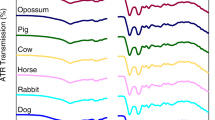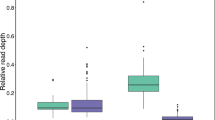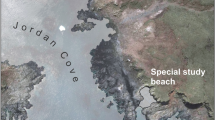Abstract
THE effects of speciation on the serum proteins of macaque monkeys and other primates are being studied in our laboratory by a combination of starch-gel electrophoretic and immunological techniques1,2. In an initial survey of the sera from 19 cynomolgus monkeys (Macaca irus) and 17 rhesus monkeys (Macaca mulatta) we found that the cynomolgus sera contained a larger proportion of γ-globulin than the rhesus sera and also that all the cynomolgus sera showed only one transferrin whereas 10 of the 17 rhesus sera showed more than one transferrin. At the time, we observed that one of the ten rhesus sera showed three transferrin components and that in the other nine sera, each of which showed two components, the relative positions of the transferrins in starch-gel varied in some cases between the samples. In order further to define the polymorphic state of transferrin in the species Macaca mulatta and the apparent absence of this state in the species Macaca irus, the sera from 40 more rhesus monkeys, newly arrived from India, and from 40 more cynomolgus monkeys, newly arrived from the Philippines, were kindly provided for study by Parke, Davis and Co. The rhesus monkeys in this shipment were captured in an area the size of a township near the Nepal border. It was not possible to trace exactly where in the Philippines the cynomolgus monkeys were captured. We have now detected fourteen transferrin patterns in the rhesus monkeys and still only one pattern in the cynomolgus monkeys. Thirteen of the transferrin patterns were represented in the last shipment. Our work, then, not only independently confirms but also considerably extends the report by Blumberg3 of eight transferrin patterns in rhesus monkeys. Our results are particularly interesting in indicating that while the environment of one species selects for a polymorphic state, the environment of a closely related species selects against this state.
This is a preview of subscription content, access via your institution
Access options
Subscribe to this journal
Receive 51 print issues and online access
$199.00 per year
only $3.90 per issue
Buy this article
- Purchase on Springer Link
- Instant access to full article PDF
Prices may be subject to local taxes which are calculated during checkout
Similar content being viewed by others
References
Goodman, M., and Poulik, M. D., Fed. Proc., 19, 74 (1960).
Goodman, M., Poulik, E., and Poulik, M. D., Nature, 188, 78 (1960).
Blumberg, B. S., Proc. Soc. Exp. Biol. Med., 104, 25 (1960).
Poulik, M. D., and Smithies, O., Biochem. J., 68, 636 (1958).
Poulik, M. D., Nature, 180, 1477 (1957).
Poulik, M. D., J. Immunol., 82, 502 (1959).
Goodman, M., Neuman, H. S., and Ramsey, D. S., J. Lab. and Clin. Med., 51, 814 (1958).
Smithies, O., and Hiller, O., Biochem. J., 72, 121 (1959).
Goodman, M., Ramsey, D. S., Simpson, W. L., Remp, D. G., Basinski, D. H., and Brennan, M. J., J. Lab. and Clin. Med., 49, 151 (1957).
Author information
Authors and Affiliations
Rights and permissions
About this article
Cite this article
GOODMAN, M., POULIK, E. Effects of Speciation on Serum Proteins in the Genus Macaca with Special Reference to the Polymorphic State of Transferrin. Nature 190, 171–172 (1961). https://doi.org/10.1038/190171a0
Issue Date:
DOI: https://doi.org/10.1038/190171a0
This article is cited by
-
Population genetics ofEulemur macaco macaco (Primates: Lemuridae) on the islands of Nosy-Be and Nosy-Komba and the Peninsula of Ambato (Madagascar)
Primates (1996)
-
Genetic polymorphisms of blood proteins in the troops of Japanese macaques,Macaca fuscata: VI. Serum transferrin polymorphism
Primates (1977)
-
Distribution of the electrophoretic variants of serum alpha1-antitrypsin in six species of the macaques
Primates (1970)
-
Heritability of the Plasma Transferrin Protein in Three Species of Microtus
Nature (1967)
-
Comparison of the Molecular Structure of Myoglobin of Fourteen Primate Species
Nature (1966)
Comments
By submitting a comment you agree to abide by our Terms and Community Guidelines. If you find something abusive or that does not comply with our terms or guidelines please flag it as inappropriate.



